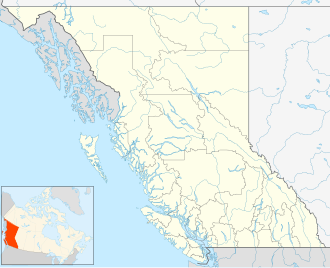| Geography | |
|---|---|
| Coordinates | 49°13′15″N122°46′30″W / 49.22083°N 122.77500°W |
| Adjacent to | Fraser River |
| Administration | |
Canada | |
| Province | British Columbia |
| Municipality | Port Coquitlam |
| Demographics | |
| Population | none |
Douglas Island is a 187-hectare (462-acre) island in British Columbia, Canada, located where the Fraser River and Pitt River meet. The island is uninhabited. The island was the property of Canadian Forest Products but the government[ which? ] bought it for $4.5 million.[ citation needed ] It became part of the city of Port Coquitlam on September 29, 1991. [1]

